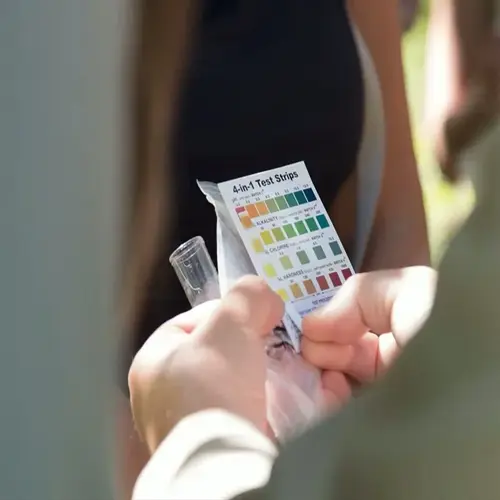Toxic Plants for Pets: Ultimate Safety Guide

Written by
John Williams
Reviewed by
Prof. Henry Webster, Ph.D.Determine harmful plants that pets should not consume to avoid a potentially fatal poisoning emergency.
Be familiar with early warning signs such as nausea and vomiting and seek veterinary medical help right away.
Lily toxicity can be fatal for cats, while dogs can be poisoned by grapes or xylitol.
Know how to contact your emergency veterinarian, and always try to spring into action with nineties ect, which is critical to get treatment within the first 30 minutes.
Replace toxic plants with pet safe options like spider plant and/or orchids.
Conduct assessement of your indoor and outdoor space for pet safe plants regularly, using databases of pet safe plants.
Article Navigation
When my cat ate a lily leaf, I discovered how it felt to deal with the dangers of toxic plants for pets. The cat suddenly vomited, and off we went to the emergency vet. We learned from this experience that common houseplants can be dangerous to our furry friends. You must know what these hazards are before disaster strikes.
When moments matter, spotting potentially hazardous plants becomes crucial. Common palms, such as sago or lilies, cause permanent organ damage. I double-check each new plant now using valid databases. You should do the same because prevention is always better than panic 1:00 am vet calls.
Safe Plant Alternatives
Choosing safe substitutes helps avoid crises with poisonous plants pets may encounter. My spider plants flourished whilst my cat safely munched their leaves. Boston ferns provide gorgeous green beauty without risk. These non-toxic options afford a rest of mind. You can enjoy greenery without fear of constant worry.
Plants that are pet-safe for indoors are above: spider plants that need watering once a week and indirect light areca palms that thrive in humidity bamboo palms that do well in low light orks. That need bright filtered son and African violets that flower with moisture given them frequently. To keep the flowering plants alive for the safety of your pet, your pets.
Safe choices for outdoors are rosemary, which loves full sun and dry soil, sunflowers, which can grow tall without much care, snapdragons, which add color in well-drained beds, camellias, which grow well in partial shade, and hibiscus, which attracts butterflies and does no harm to pets. Avoid lilies and sago palms growing nearby.
On the other side of the equation are the dangerous plants, such as the lilies, which cause failure of the kidneys. The bad choices must be eliminated as contributing factors to poisoning. The garden of my cottage now contains rosemary and snapdragons in the place of foxglove. Create an oasis with a selection of the non-toxic varieties that have been tested. A little care in the choice of plant material guarantees against future trouble.
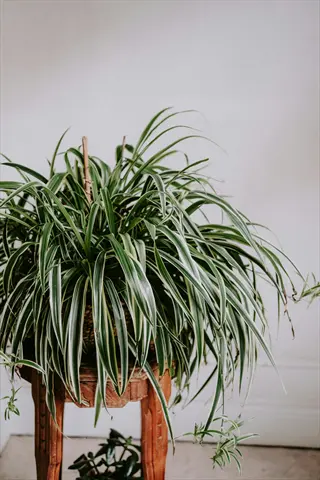
Spider Plant
- Fact: Completely non-toxic to cats and dogs featuring arching green and white striped leaves that tolerate occasional nibbling without health risks.
- Care: Thrives in bright indirect light requiring weekly watering and occasional misting to maintain vibrant foliage throughout the year.
- Benefit: Excellent air purifier removing formaldehyde and xylene from home environments unlike toxic lilies that cause kidney failure.
- Placement: Ideal for hanging baskets or high shelves away from direct sunlight exposure where pets cannot reach easily.
- Propagation: Easily grows baby spiderettes that can be repotted to create additional safe plants for your household.
- Safety Note: Harmless alternative to toxic plants pets might encounter with zero risk of poisoning symptoms.

Boston Fern
- Fact: Completely safe for pets featuring lush feathery fronds that naturally humidify rooms without toxic compounds endangering animals.
- Care: Prefers humid locations like bathrooms needing consistent moisture in well-drained soil and indirect lighting conditions.
- Benefit: Natural humidifier releasing moisture while filtering airborne pollutants effectively unlike poisonous castor oil plants.
- Placement: Best in shaded outdoor patios or bright indoor spaces without drafts where pets frequent safely.
- Maintenance: Requires regular pruning of brown fronds to maintain vibrant appearance throughout seasonal changes.
- Safety Note: Fronds may cause mild stomach upset but pose no toxic danger compared to deadly foxgloves.
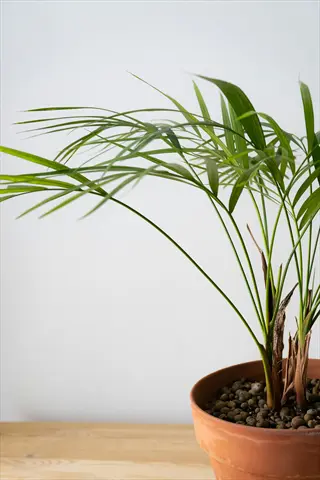
Areca Palm
- Fact: Pet-friendly palm with feathery arching fronds growing up to 6 feet tall without toxic properties.
- Care: Needs bright filtered light and consistent watering avoiding waterlogged conditions that cause root rot.
- Benefit: Superior air purifier removing benzene formaldehyde and carbon monoxide from indoor environments.
- Placement: Perfect for living room corners or office spaces needing tropical accents away from pet play areas.
- Growth: Fast-growing plant requiring annual repotting to accommodate root expansion over time.
- Safety Note: Entire plant is non-toxic with no harmful effects unlike azaleas that cause vomiting.

African Violet
- Fact: Compact flowering plant with velvety leaves and purple blooms completely safe for household pets.
- Care: Prefers east-facing windows needing consistent moisture using room-temperature water to avoid leaf spotting.
- Benefit: Long-lasting flowers blooming year-round providing colorful accents without toxicity concerns.
- Placement: Ideal for tabletops or windowsills protected from temperature fluctuations and direct sun.
- Propagation: Easily grown from leaf cuttings placed in moist potting mix for new plant development.
- Safety Note: Causes no toxicity issues though ingestion may cause mild drooling unlike lethal yew plants.
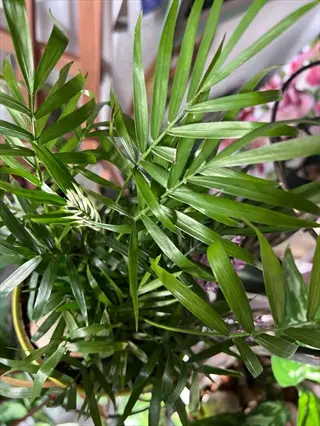
Parlor Palm
- Fact: Compact palm with delicate fronds growing well in low-light indoor conditions safely around pets.
- Care: Tolerates shade requiring moderate watering allowing soil to dry slightly between waterings.
- Benefit: Effective at removing indoor air pollutants like benzene and formaldehyde efficiently.
- Placement: Excellent for bedrooms offices or dimly lit corners needing greenery without toxicity risks.
- Growth: Slow-growing reaching 4 feet maximum height over several years with minimal care.
- Safety Note: Completely non-toxic to both cats and dogs unlike sago palms that cause liver failure.
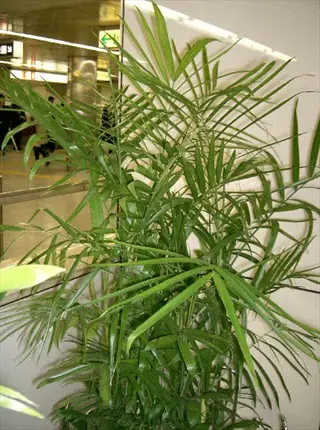
Bamboo Palm
- Fact: Tall graceful palm with clustered stems creating tropical atmosphere without endangering pets.
- Care: Requires bright indirect light and humid conditions needing regular misting for optimal growth.
- Benefit: Top-rated air purifier particularly efficient at removing formaldehyde particles from air.
- Placement: Suitable for large spaces like living rooms where pets roam freely without danger.
- Maintenance: Wipe leaves monthly to remove dust buildup and maintain photosynthesis efficiency.
- Safety Note: Entire plant poses no toxicity threat compared to oleander that causes cardiac arrest.

Cast Iron Plant
- Fact: Extremely hardy plant with dark green leaves tolerating neglect and low light safely.
- Care: Thrives in almost any condition including drought poor soil and temperature fluctuations.
- Benefit: Excellent choice for beginners needing virtually indestructible pet-safe greenery options.
- Placement: Works in dark corners hallways or spaces with minimal natural lighting conditions.
- Growth: Slow-growing reaching about 2 feet height over multiple years with little attention.
- Safety Note: Non-toxic properties make it perfect unlike dieffenbachia that causes oral swelling.
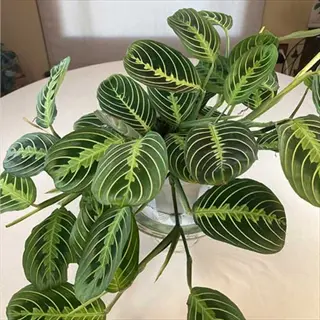
Prayer Plant
- Fact: Colorful foliage with patterned leaves that fold upward at night without toxic compounds.
- Care: Prefers high humidity bright indirect light and consistently moist well-draining soil mixtures.
- Benefit: Unique moving leaves provide visual interest without toxic properties harming pets.
- Placement: Best in terrariums or bathrooms where humidity levels remain elevated consistently.
- Propagation: Easily divided during repotting to create additional plants for other rooms.
- Safety Note: Harmless to pets though may cause mild stomach upset unlike lilies that kill cats.
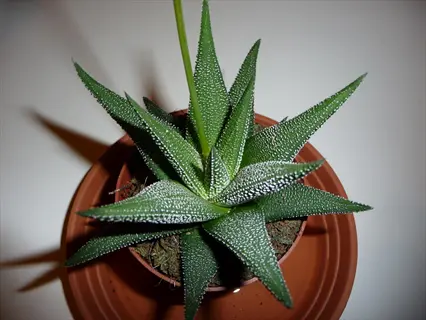
Haworthia
- Fact: Small rosette-forming succulent with striped leaves completely safe for pet households.
- Care: Requires bright light infrequent watering and well-draining cactus soil mix for health.
- Benefit: Drought-tolerant plant perfect for sunny windowsills needing minimal care and attention.
- Placement: Ideal for small spaces like desks where pets might investigate but remain safe.
- Growth: Slow-growing with offsets producing new plants around the mother rosette over time.
- Safety Note: Completely non-toxic alternative to dangerous succulents like jade plants.
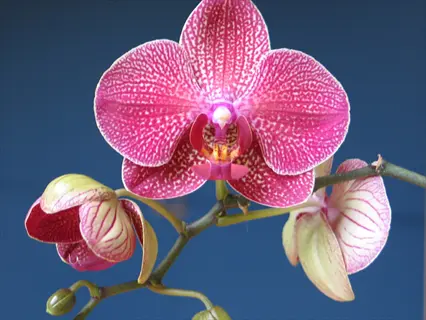
Orchid
- Fact: Elegant flowering plant with long-lasting blooms posing no pet toxicity risks indoors.
- Care: Requires bright indirect light weekly watering and specialized orchid mix for root health.
- Benefit: Exotic flowers lasting months providing beauty without dangers of toxic plants pets encounter.
- Placement: Perfect for bright bathrooms or east-facing windowsills protected from direct sun.
- Maintenance: Trim flower spikes after blooming and repot every two years for continued growth.
- Safety Note: Safe for pets though ingestion may cause mild gastrointestinal upset without lasting harm.
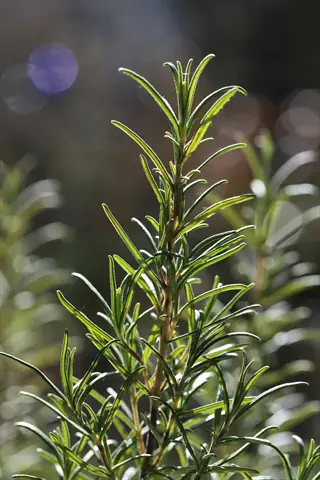
Rosemary
- Fact: Fragrant culinary herb safe for pets with needle-like leaves and purple flowers outdoors.
- Care: Thrives in full sun with well-draining soil needing moderate watering during dry spells.
- Benefit: Doubles as cooking ingredient and ornamental plant without toxic risks to animals.
- Placement: Excellent for garden borders or containers on patios where pets may explore.
- Growth: Evergreen shrub reaching 3-5 feet tall with proper pruning and care annually.
- Safety Note: Completely pet-friendly unlike rhododendrons that cause cardiovascular collapse.

Sunflower
- Fact: Cheerful flowering plant with large yellow blooms safe for gardens with outdoor pets.
- Care: Needs full sun exposure and regular watering in well-draining fertile soil conditions.
- Benefit: Provides seeds for birds without toxic properties endangering dogs or cats.
- Placement: Ideal for backyard gardens or along fences where pets roam freely outside.
- Growth: Annual plant reaching 6-12 feet height depending on variety and growing conditions.
- Safety Note: Non-toxic alternative to autumn crocus that causes severe organ damage.
Symptoms Identification
Gastrointestinal upset usually occurs first after exposure to poisonous plants for pets. Nausea/vomiting may suddenly arise, sometimes with blood. Abdominal pain will cause the pet to hunch or whimper. Excessive salivation indicates oral irritation. Diarrhea frequently follows quickly. All these symptoms require immediate attention to prevent complications.
Neurological signs include threatening tremors and partial paralysis. Cats conceal weakness, but dogs stagger tremendously. Seizures indicate serious poisoning. Watch for expanded pupils or disorientation. Cats suffer 50% kidney failure within 48 hours following lily contact. Recognition of these variations saves lives.
Timing is critical. The sago palm toxins exhibit signs of liver damage after 12 hours. The foxglove plant affects a person's heart rhythm within minutes. It is best to document exactly when signs or symptoms began. This information helps veterinarians administer an effective antidote more rapidly during emergencies.
Respond swiftly for fever over 103°F or seizures. Wrap pets in towels to lessen injuries during convulsions. Rush to the emergency car center to provide as soon as possible. These critical moments determine the chances for recovery, especially when fast-acting plant toxins are involved.
Gastrointestinal Signs
- Most Common: Nausea vomiting (especially in dogs), diarrhea with possible blood, excessive drooling, and abdominal pain.
- Species Variation: Rabbits and guinea pigs cannot vomit but show teeth grinding and reduced fecal output.
- Urgency Level: Persistent vomiting over 2 hours requires immediate veterinary intervention to prevent dehydration.
- Key Plants: Caused by lilies, castor oil plant, and azaleas affecting cats dogs and small pets equally.
Neurological Symptoms
- Critical Indicators: Tremors, seizures, disorientation, paralysis, and abnormal pupil dilation (mydriasis or miosis).
- Species Variation: Dogs often show obvious stumbling while cats hide symptoms until advanced stages.
- Urgency Level: Any seizure activity requires emergency care within 30 minutes to prevent brain damage.
- Key Plants: Triggered by foxgloves, delphiniums, and sago palms with symptoms appearing within 1-4 hours.
Cardiovascular Effects
- Danger Signs: Irregular heartbeat (arrhythmia), rapid pulse, weakness, collapse, and pale mucous membranes.
- Species Variation: Small dogs show earlier collapse than larger breeds due to faster metabolism.
- Urgency Level: Cardiac symptoms demand immediate vet attention as they can be fatal within hours.
- Key Plants: Oleander, yew, and lily of the valley cause life-threatening cardiovascular failure.
Respiratory Distress
- Warning Signals: Labored breathing, coughing, wheezing, blue-tinged gums, and open-mouth breathing.
- Species Variation: Brachycephalic breeds (pugs, bulldogs) deteriorate faster due to airway limitations.
- Urgency Level: Respiratory failure requires oxygen therapy - seek help within 30 minutes of symptoms.
- Key Plants: Caused by peace lilies, caladiums, and diffenbachia due to oral swelling blocking airways.
Renal Failure Indicators
- Critical Markers: Increased thirst, frequent urination followed by no urination, and bad breath.
- Species Variation: Cats develop permanent kidney damage from lilies within 48 hours of exposure.
- Urgency Level: Lack of urination for 12+ hours indicates organ failure needing dialysis.
- Key Plants: True lilies cause irreversible kidney damage in cats with just pollen contact.
Dermatological Reactions
- Visible Signs: Skin redness, swelling, hives, blisters, and excessive scratching or face rubbing.
- Species Variation: Hairless pets show reactions faster than thick-coated animals like huskies.
- Urgency Level: Facial swelling threatening airways needs immediate antihistamine treatment.
- Key Plants: Triggered by poison ivy, chrysanthemums, and primroses through direct skin contact.
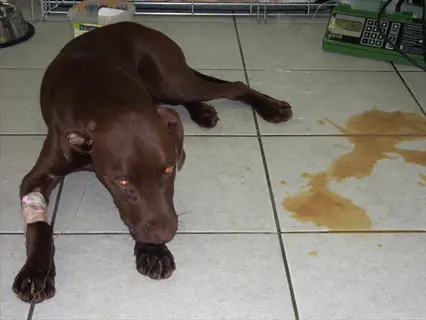
Gastrointestinal Signs
- Most Common: Nausea vomiting (especially in dogs), diarrhea with possible blood, excessive drooling, and abdominal pain.
- Species Variation: Rabbits and guinea pigs cannot vomit but show teeth grinding and reduced appetite instead.
- Onset Timing: Symptoms appear within 2-6 hours in dogs, 4-12 hours in cats, and 12-24 hours in small pets.
- Urgency Level: Persistent vomiting over 2 hours requires immediate veterinary intervention to prevent dehydration.
- Systemic Signs: Fever over 103°F (39.4°C) indicates severe inflammation requiring cooling measures.
- Key Plants: Caused by lilies, castor oil plant, and azaleas affecting all pets.
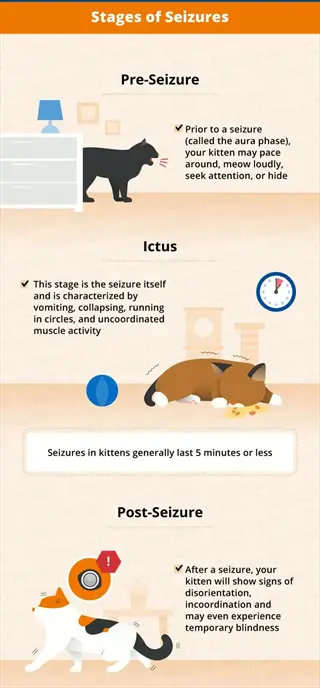
Neurological Symptoms
- Critical Indicators: Tremors, seizures, disorientation, paralysis, and abnormal pupil size (dilated or constricted).
- Species Variation: Dogs show obvious stumbling; cats hide symptoms until advanced stages.
- Onset Timing: Appears within 1-4 hours for foxglove poisoning; 30 minutes for sago palm toxins.
- Urgent Action: During seizures, wrap pets in a towel and go to the vet immediately.
- Systemic Signs: Body temperature spikes above 104°F (40°C) during severe neurological episodes.
- Key Plants: Triggered by foxgloves, delphiniums, and sago palms.

Cardiovascular Effects
- Danger Signs: Irregular heartbeat, rapid pulse, weakness, collapse, and pale gums.
- Species Variation: Small dogs collapse faster than larger breeds due to faster metabolism.
- Onset Timing: Cardiac symptoms emerge within 30 minutes of oleander ingestion.
- Urgent Action: Perform CPR if heartbeat stops while transporting to emergency clinic.
- Monitoring Tip: Check gum color (white/blue indicates oxygen deprivation) and monitor temperature; over 103°F (39.4°C) signals systemic stress.
- Key Plants: Oleander, yew, and lily of the valley cause life-threatening failure.
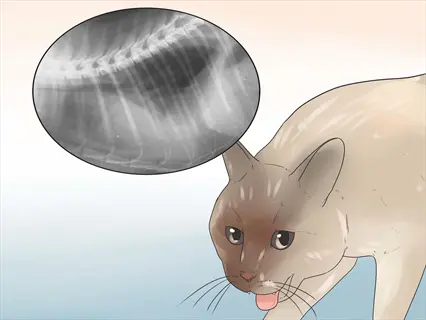
Respiratory Distress
- Warning Signals: Labored breathing, coughing, blue-tinged gums, and open-mouth breathing.
- Species Variation: Breeds like pugs deteriorate faster due to airway limitations.
- Onset Timing: Peace lily toxins cause swelling within 15 minutes of ingestion.
- Urgent Action: Clear airways of obstruction; provide oxygen if available en route to vet.
- Temperature Note: Fever often accompanies respiratory inflammation over 102°F (38.9°C).
- Key Plants: Caused by peace lilies, caladiums, and diffenbachia blocking airways.
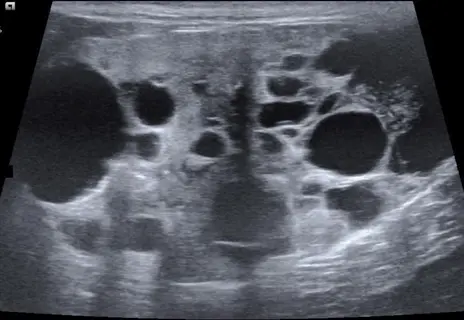
Renal Failure Indicators
- Critical Markers: Increased thirst, frequent urination followed by no urination, and bad breath.
- Species Variation: Cats develop permanent damage within 48 hours of lily pollen contact.
- Onset Timing: Kidney shutdown begins 12-24 hours post-ingestion in feline cases.
- Urgent Action: IV fluids must start within 6 hours to prevent irreversible damage.
- Systemic Signs: Fever over 103°F (39.4°C) signals advanced infection or toxicity.
- Key Plants: True lilies cause irreversible kidney damage in cats.

Dermatological Reactions
- Visible Signs: Redness, swelling, hives, blisters, and excessive face rubbing.
- Species Variation: Hairless pets react faster than thick-coated animals like huskies.
- Onset Timing: Rashes appear within 30 minutes of contact with poison ivy.
- Urgent Action: Bathe pets in cool water with oatmeal shampoo to soothe skin.
- Temperature Note: Affected skin areas feel hotter than 100°F (37.8°C) during inflammation.
- Key Plants: Triggered by poison ivy, chrysanthemums, and primroses on contact.
Cats and Dogs Specific Risks
Cats may die if they are exposed to lilies, where even the pollen will put them in acute renal failure in 48 hours. Dogs may die from grapes, which can cause acute kidney failure, or xylitol, which can cause hypoglycemia. Be careful of the species-specific dangers. Be sure you know which toxic plants pets pose a threat to your pet.
Monitor cats for signs of kidney failure such as excessive thirst or not urinating after exposure to lilies. Dogs show neurologic signs like weakness and tremors from macadamia nuts. Symptoms differ greatly between species. Cats can hide illness, while dogs have the most obvious distress signs.
The timing of scares is essential to saving lives. Lily toxicity requires veterinary attention within 18 hours for cats. In contrast, xylitol poisoning involves the administration of IV glucose in dogs within one hour. Mark exactly when the exposure occurred. All this information will inform emergency treatment.
Change hazards for safety, replace lilies with orchids for cats, and Carrot sticks instead of grapes for dogs. I revamped my abode with spider plants instead of dieffenbachia. You create secure areas by using established non-poisonous alternatives.
Cats: Lilies
- Lethal Mechanism: Even pollen ingestion causes acute kidney failure within 48 hours.
- Symptoms: Nausea vomiting within 2 hours, dehydration, and no urination (aligns with Symptoms Identification section).
- Urgency: Kidney damage irreversible if untreated beyond 18 hours; IV fluids critical.
- Prevention: Replace with safe orchids instead; remove Easter, tiger, and daylilies from cat areas.
- Key Stat: 90% of cats die without treatment within 3 days of lily exposure.
Cats: Essential Oils
- Toxicity Source: Tea tree, eucalyptus, and peppermint oils in diffusers or cleaners.
- Symptoms: Drooling, tremors, respiratory distress, and liver damage.
- Urgency: Neurological symptoms require vet care within 4 hours of exposure.
- Prevention: Use oil-free products; cats lack enzymes to process certain chemicals.
- Unique Risk: Ensure ventilation when diffusing; opt for pet-safe alternatives.
Cats: Sago Palm
- Lethal Mechanism: Liver-damaging toxins cause failure; 50% mortality rate.
- Symptoms: Vomiting with blood, abdominal pain, jaundice (yellow gums).
- Urgency: Liver enzymes spike within 12 hours; treatment window <8 hours.
- Prevention: Remove sago palms; use pet-safe parlor palm instead.
- Key Stat: One seed can kill a cat within 24 hours of ingestion.
Dogs: Grapes/Raisins
- Lethal Mechanism: Unknown toxin causes acute kidney failure within 24 hours.
- Symptoms: Nausea vomiting, abdominal pain, lethargy, and reduced urination.
- Urgency: Induce vomiting within 30 minutes; dialysis needed beyond 8 hours.
- Prevention: Never feed grapes; check baked goods for raisin content.
- Dose Risk: 0.7 oz/kg (20g/kg) causes toxicity (e.g., 10 grapes for 20-lb/9-kg dog).
Dogs: Macadamia Nuts
- Toxicity Source: Nuts cause neuromuscular paralysis within 12 hours.
- Symptoms: Weakness, tremors, vomiting, and hyperthermia (over 104°F/40°C).
- Urgency: Symptoms peak at 24 hours; vet care needed for hydration.
- Prevention: Avoid nut-containing trail mixes; store baking ingredients securely.
- Key Fact: Effects temporary but debilitating; recovery takes 24-48 hours.
Dogs: Xylitol
- Lethal Mechanism: Artificial sweetener triggers insulin surge causing hypoglycemia.
- Symptoms: Vomiting, lethargy, collapse, and seizures within 30 minutes.
- Urgency: Blood sugar crashes in 1 hour; IV glucose required immediately.
- Prevention: Check peanut butter, gum, and toothpaste labels; use stevia alternatives.
- Dose Risk: 0.1g/kg causes toxicity (e.g., 1 gum piece per 10-lb/4.5-kg dog).
Most Toxic Plants
Lilies (Lilium spp.) are one of the most lethal poisonous plants pets can come in contact with. Every part of the plant, including pollen, produces renal failure in cats within 48 hours. Dogs and rabbits are also susceptible to serious illness. Symptoms include initially nausea vomiting, which progresses to anuria.
Seeds and leaves of Sago Palm (Cycas revoluta) contain poisons that attack the liver in all pets. Oleander (Nerium oleander) acts through its leaves and flowers to cause heart arrest. Both these plants produce violent reactions. Seeds of Castor bean (Ricinus communis) give dogs and cats cramps and pain in the abdomen.
Moderate risks include Dieffenbachia, which can lead to swelling of the oral cavity in cats. Tulips (Tulipa spp.) can result in drooling in dogs when they eat the plant's bulb. Azaleas (Rhododendron spp.) can cause cardiac problems from eating their nectar. Finally, guinea pigs are severely affected by rhubarb leaves, which will cause tremors.
Hazardous plants, such as foxglove (Digitalis purpurea), disturb the heart rhythm. Autumn crocus (Colchicum autumnale) bulbs create organ damage, and peace lilies cause difficulties in breathing. Always check databases before adding new plants to your pets' environment.
Emergency Response Steps
Respond quickly if you suspect toxic plants pets exposure. Identify the plant accurately and take photos of the leaves, flowers, and berries. Clear any material from your pet's mouth using gloves if possible. Isolate them from the plant area to prevent further exposure.
Check vital signs carefully. The normal respiration rate is 15-30 breaths per minute. To take the temperature, use a rectal thermometer. Normal temperature is 100-102.5°F or 38-39.2°C.Note the gum color; pink is healthy. Record symptoms, e.g., nausea, vomiting, or twitching.
Immediately contact professionals about the plant. Contact your veterinarian or Animal Poison Control. Provide your pet's weight, for example, a 15 lb (6.8 kg) dog, and the exposure time. For xylitol poisoning, you only have one hour to get medical assistance for the animal.
Get ready for transportation. Collect plant samples and vomit evidence. Induce vomiting only if directed using 1 tsp 5ml hydrogen peroxide per 10 lb 4.5 kg of body weight. Transport patients simultaneously while monitoring their breathing. Reach the clinic within critical time frames.
Step 1: Identify and Remove
- Action: Examine pet's mouth for plant remnants; remove visible pieces with gloves.
- Identification: Take clear photos of the plant including leaves, flowers, and berries.
- Decontamination: Rinse mouth with water if safe; wipe paws/fur with damp cloth.
- Prevention: Isolate pet from plant area to prevent further ingestion.
Step 2: Assess Symptoms
- Check Vital Signs: Monitor breathing (normal: 15-30 breaths/minute), gum color (pink=healthy), and temperature using rectal thermometer (normal: 100-102.5°F/38-39.2°C).
- Symptom Log: Record time of onset for nausea vomiting, tremors, or weakness matching Symptoms Identification.
- Severity Scale: Note if symptoms indicate neurological or gastrointestinal emergencies.
Step 3: Contact Professionals
- Primary Contact: Call your veterinarian immediately; describe plant and symptoms.
- Backup Resource: Contact pet poison control hotline or emergency veterinary service.
- Critical Info: Share pet's weight (e.g., 15-lb/6.8-kg dog), exposure time, and symptoms.
Step 4: Preserve Evidence
- Plant Sample: Collect 2-3 leaves/flowers in sealed bag; include roots if possible.
- Vomit/Bodily Fluids: Save sample in container for toxin analysis.
- Time Documentation: Note exact exposure time (e.g., 'ingested at 2:30 PM').
Step 5: First Aid Measures
- Vomiting Induction: ONLY if directed by professional within 30 minutes of ingestion. Use 3% hydrogen peroxide (1 tsp/5ml per 10-lb/4.5-kg body weight).
- Toxin-Specific Care: For lily ingestion (cats), induce vomiting ONLY if <30 mins post-exposure; for other toxins, use activated charcoal if advised.
- Hydration: Offer ice chips if swallowing possible; never force water during seizures.
Step 6: Transport to Vet
- Preparation: Bring plant samples, symptom log, and medical records.
- Seizure Management: Protect head if seizures last >2 minutes; cover with towel.
- Critical Timing: For lilies (cats) or xylitol (dogs), arrive within 1 hour.
- En Route Care: Monitor breathing every 5 minutes; perform CPR if heartbeat stops.
5 Common Myths
Pets naturally shun toxic plants. They can smell or taste danger.
That is a dangerous falsehood that exists. Pets do not know from birth of the toxins in plants and often eat them from curiosity or boredom. Kitties chew lilies while playing with them. Dogs dig castor bean plants for fun. Nausea vomiting as a symptom are the result of the fact that animals do not know agents of poison. Always study plants before bringing them into the house and supervise pet relationships with the greenery to avoid poisoning them.
Some parts of poisonous plants are dangerous (flowers and berries), while others (leaves) are safe.
Completely false. Most poisonous plants contain dangerous compounds in all parts (leaves, stems, roots, pollen and even water runoff). For example, lily pollen causes kidney failure in cats merely if it is groomed from the fur, and sago palm leaves contain powerful liver damaging compounds. Never assume that any structure of a plant is safe; if a plant is poisonous, the whole plant must be considered as dangerous to pets.
Small quantities of toxic plants are harmless and pets would have to ingest a large quantity of them before they would experience an illness.
This myth can have fatal consequences. Many plants have lethal effects in minute doses; a single lily petal can kill a cat, and 0.1g/kg of xylitol can produce hypoglycaemia in dogs. Any intake can produce nausea, vomiting or seizures. Every known exposure to a toxic plant should be treated as an emergency, irrespective of the amounts taken.
Outdoor plants are less dangerous than houseplants since pets encounter them less frequently in gardens.
Wrong and dangerous. Outdoor plants such as oleander, yew and foxglove are extremely toxic and readily accessible to pets. Dogs may chew garden plants when playing, which can cause nausea vomiting later, while outdoor cats may nibble foliage that is dangerous. Always audit both indoor and outdoor places with complete reliable toxic plants db for pets prior to allowing pet access.
The indications of plant poisoning can be readily identified because they occur immediately after ingestion .
This is a fallacy which can be most dangerous. Many of the toxins have a delayed action: lily poisoning of cats produces nausea vomiting after 2-6 hours, failure of the kidney not appearing until 48 hours later. The symptoms of sago palm poisoning do not appear until between 12-24 hours afterwards. Pets should be observed most closely for 72 hours after a suspected exposure to plants and veterinary care should be sought without regard to evidence of immediate symptoms.
Conclusion
The first step to protecting your pets is knowing your plants and the species-specific risks involved. Cats suffer renal failure from lilies. Dogs have neurological issues with xylitol. Being ready for emergencies means knowing the crucial timelines, such as the one-hour window for xylitol poisoning.
Preventative measures always outweigh any possible treatment of toxic plants your pets may encounter. Recognizing symptoms early on, such as nausea vomiting, is a lifesaver. Instead of facing an emergency, without knowing the facts, knowing the facts places you in a position to avoid those emergencies. I transformed my home from those dangerous lilies that led to disaster to now using spider plants. You set up security through good choices.
To ensure the safety of pets, begin today to assess your plants through reliable data sources. For instance, replace dangerous plants like sago palms with safe palms. Then spread the word to fellow pet owners. Your actions will assist in building safe havens in which both pets and plants can thrive without danger.
External Sources
Frequently Asked Questions
What is the most toxic plant to pets?
Lilies are extremely lethal, especially to cats, causing kidney failure within 48 hours. Even pollen contact can be fatal without immediate veterinary intervention. Other high-risk plants include sago palm, oleander, and castor bean.
Are indoor plants toxic to pets?
Many popular houseplants pose dangers: lilies cause kidney failure in cats, dieffenbachia causes oral swelling, and peace lilies trigger respiratory distress. Always verify safety using pet-specific databases before bringing plants indoors.
What plants should you avoid with dogs?
Key hazards include:
- Grapes/raisins causing kidney failure
- Xylitol-containing plants leading to hypoglycemia
- Sago palms inducing liver damage
- Oleander triggering cardiac arrest
- Macadamia nuts causing neurological issues
Are succulents toxic to cats?
Some succulents like jade plants cause nausea vomiting and depression, while haworthia and burro's tail are safe. Always identify species precisely, as look-alike varieties may have different toxicity levels for pets.
Do pets instinctively avoid toxic plants?
No, animals lack innate toxicity recognition. Curiosity often leads cats to chew lilies or dogs to dig up castor beans. Symptoms like nausea vomiting occur precisely because they can't identify dangers.
Is lavender safe for pets?
Lavender plants cause mild nausea vomiting in dogs and cats if ingested. Essential oil versions are highly concentrated and riskier, potentially causing neurological symptoms like tremors and respiratory distress.
What are pet-safe plant alternatives?
Non-toxic options include:
- Spider plants for air purification
- Boston ferns as humidity boosters
- Orchids for flowering beauty
- Parlor palms in low light
- Rosemary for edible gardening
How quickly do poisoning symptoms appear?
Onset varies: xylitol causes hypoglycemia in 30 minutes, lily toxicity shows nausea vomiting in 2-6 hours, while sago palm symptoms emerge after 12-24 hours. Monitor pets for 72 hours post-exposure.
What emergency steps follow plant ingestion?
Critical actions:
- Remove plant material from mouth
- Identify plant and photograph it
- Call vet or poison control immediately
- Preserve vomit/plant samples
- Transport to clinic within 1 hour
Are outdoor gardens riskier than indoor plants?
Both pose threats: outdoor gardens contain foxglove and yew, while indoor spaces host lilies and dieffenbachia. Pets may encounter toxins more frequently outdoors during play or exploration in unmonitored areas.
